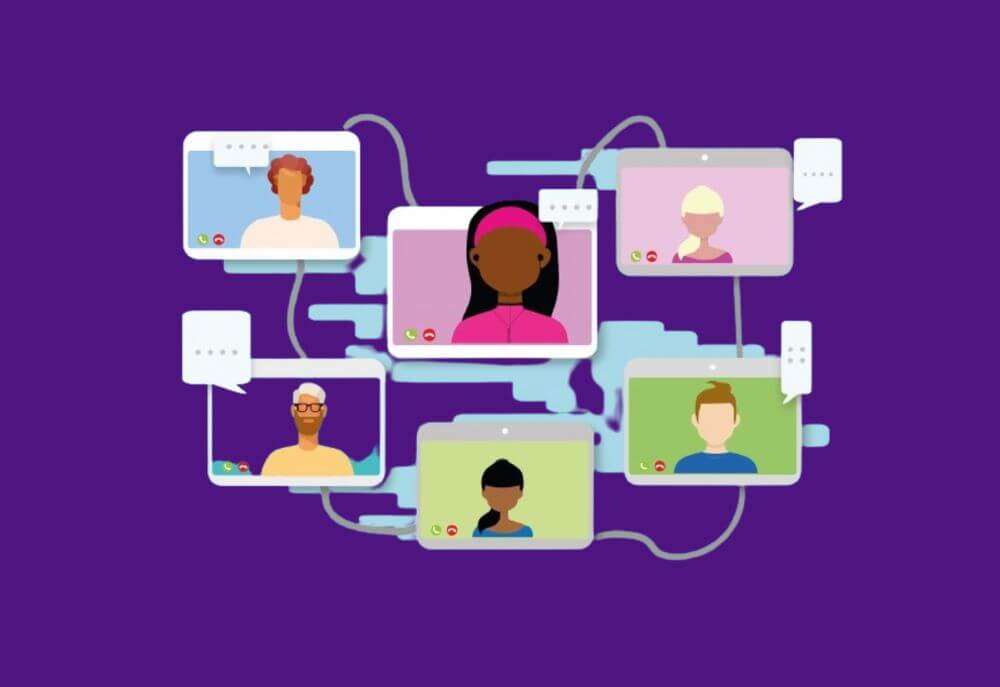The way we work has undergone a seismic shift in recent years. With remote working becoming more prevalent, organizations are navigating the complexities of bringing together in-office and remote employees. Enter the era of hybrid meetings—a blend of in-person and virtual attendees collaborating seamlessly. If you’re looking to make the most out of this hybrid workplace model, it’s essential to understand how to create inclusive, productive meetings that offer equal opportunity for all participants.
What Are Hybrid Meetings?
Hybrid meetings are gatherings where some participants are physically present in a conference room, while others join remotely via video meeting platforms like Zoom or Microsoft Teams. This setup aims to bridge the gap between remote participants and those in the office, ensuring everyone can contribute meaningfully.
The Rise of the Hybrid Workplace
The hybrid workplace has emerged as a response to the growing demand for flexible work arrangements. Remote working offers employees the freedom to work from anywhere, but it also presents challenges in communication and collaboration. Hybrid meetings attempt to merge the best of both worlds by providing a platform where in-person and remote attendees can interact effectively.
Challenges in Hybrid Meetings
While hybrid meetings offer numerous benefits, they come with their own set of challenges:
- Inequality in Participation: Remote participants may feel sidelined if the meeting focuses more on in-person attendees.
- Technical Glitches: Poor audio or video quality can disrupt the flow and make it hard for virtual attendees to follow along.
- Lack of Engagement: Without the right digital tools, keeping remote employees engaged can be challenging.
- Communication Barriers: Non-verbal cues are harder to read in virtual settings, which can lead to misunderstandings.
Best Practices for Effective Hybrid Meetings
To overcome these challenges, consider the following best practices:
1. Prioritize Inclusive Communication
Ensure that both in-person and remote attendees have the opportunity to contribute. This might mean actively inviting input from remote participants or using features like “raise hand” in your meeting platform to manage turn-taking.
2. Utilize the Right Digital Tools
Invest in technology that enhances the meeting experience for everyone. Virtual whiteboards like Miro or Mural can help bridge the gap by allowing all participants to contribute visually, regardless of their location.
3. Test Technology Ahead of Time
Before the meeting, check that all audio-visual equipment is functioning correctly. This includes microphones, cameras, and internet connectivity. Doing so minimizes disruptions and shows respect for everyone’s time.
4. Encourage Asynchronous Communication
Not everything needs to be discussed in a meeting. Utilize asynchronous communication methods like emails or collaborative documents to share updates that don’t require immediate feedback. This approach can make meetings more focused and efficient.
5. Establish Meeting Norms
Set clear expectations about meeting etiquette. For example, require everyone to join the meeting on their own device, even if they are in the same room, to create a level playing field.
6. Facilitate Actively
Assign a facilitator to monitor engagement levels among all attendees. The facilitator can manage the flow of conversation, ensuring that remote participants are not overshadowed by those physically present.
7. Make Use of Virtual Breakout Rooms
For larger meetings, virtual breakout rooms can encourage more intimate discussions and allow remote employees to engage more deeply with their colleagues.
8. Record Meetings
Recording meetings can be beneficial for those who couldn’t attend and for participants to revisit complex discussions. Ensure you have consent from all attendees before recording.
9. Provide Equal Access to Resources
Share all meeting materials digitally before the meeting. This ensures that remote participants have the same information as in-person attendees.
10. Seek Feedback
Regularly ask for feedback from your team about what’s working and what’s not. This can help you refine your approach and make hybrid meetings more effective over time.
Tools to Enhance Hybrid Meetings
Leveraging the right tools can significantly improve the hybrid meeting experience:
- Video Meeting Platforms: Zoom, Microsoft Teams, and Google Meet offer robust features suitable for hybrid meetings.
- Virtual Whiteboards: Tools like Miro and Mural allow collaborative brainstorming in real-time.
- Project Management Software: Asana or Trello can help track action items and keep everyone accountable.
- Communication Platforms: Slack or Microsoft Teams chat can facilitate asynchronous communication and quick updates.
- How Cultup Can Help: Cultup is an AI-powered platform that can transform your hybrid meetings by optimizing participant engagement and interaction. It offers features such as live Q&A sessions, real-time participant feedback on engagement and energy levels, and AI-driven meeting summaries. These tools ensure that both in-person and remote attendees are actively engaged, creating a balanced and productive meeting environment. By leveraging Cultup’s technology, you can minimize common hybrid meeting challenges like inequality in participation and disengagement, ultimately improving overall meeting efficiency and collaboration.
Creating the Best User Experience
The goal of a hybrid meeting is to make everyone feel included and engaged. Here are some tips to enhance the user experience:
- High-Quality Audio and Video: Invest in good microphones and cameras. Poor audio quality is one of the biggest barriers to effective communication.
- Camera Placement: Position cameras to capture the entire room so remote attendees can see everyone.
- Interactive Elements: Use polls, Q&A sessions, or collaborative documents to keep participants engaged.
- Breaks: For longer meetings, schedule short breaks to combat screen fatigue, especially for virtual attendees.
The Importance of Equal Opportunity
In a hybrid workplace, it’s crucial to ensure that remote employees have the same opportunities for participation and advancement as their in-office counterparts. This means being mindful of unconscious biases that may favor those who are physically present.
Embracing Asynchronous Communication
Asynchronous communication complements hybrid meetings by allowing team members to process information at their own pace. Tools like shared documents and recorded presentations can be invaluable, especially when dealing with different time zones.
Case Study: A Successful Hybrid Meeting Scenario
Imagine a marketing team spread across different locations. They need to brainstorm ideas for an upcoming campaign. By setting up a hybrid meeting with both in-person and remote attendees, and using a virtual whiteboard, they can collaborate in real-time. The facilitator ensures that everyone has a chance to speak, and the meeting wraps up with clear action items assigned to each team member.
Conclusion
Hybrid meetings are more than just a trend; they’re becoming a staple in the modern hybrid workplace. By implementing best practices and leveraging digital tools, you can create meetings that are productive, inclusive, and engaging for both in-person and remote participants. Remember, the key is to provide equal opportunities for all attendees to contribute, ensuring that your team can collaborate effectively, no matter where they are.
By embracing the nuances of hybrid meetings and focusing on inclusive practices, you can navigate the complexities of a distributed workforce with confidence. The future of work is hybrid, and with the right approach, your meetings can be too.



